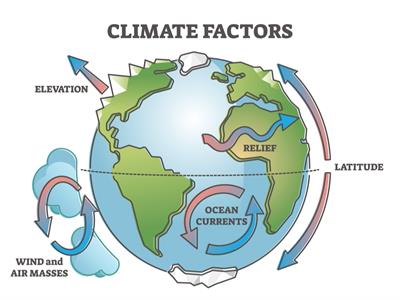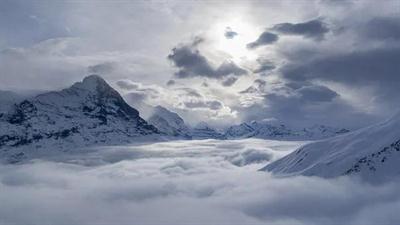PDF chapter test TRY NOW
Many factors influence weather and climate.
- Distance from the equator
- Altitude
- Nearness to the sea
- Nature of the prevailing winds
- Mountain barrier
- Cloud cover
- Ocean currents
- Natural vegetation

Distance from the Equator
Altitude
Altitude refers to the height above mean sea level. The temperature decreases at the rate of \(6.5°C\ per\ km\ \)(i.e. 1000m) of height. This is called the Normal lapse rate. So, places at a higher altitude have a lower temperature. This is the reason why hill station like Ooty has cooler weather even during summer.

Continentality
Land surfaces are heated more quickly than water surfaces because of the higher specific heat of the water. In other words, for the same volume, land requires only \(1/3rd\ \)of the energy required by the water to raise the temperature by \(1°F\). This is why continental climate comes into play.
Nature of the prevailing winds
Based on the characteristics of wind, which is again based on where they blow, it makes the place warm and cold. Winds that blow from the sea (on-shore winds) often bring rain to the coast and dry weather to inland areas. In contrast, the off-shore winds bring dry weather.
If a wind blows from a warm region, it makes the place warm, and if blown from a cold region, it makes the place cold.
Mountains barriers
Mountains can influence climate. Mountains receive more rainfall than the low-lying regions because the mountains act as natural barriers for the wind, so it is forced to ascend. On ascending, it cools, condenses and precipitates. It also prevents the entry of cold winds into the country or the escape of monsoon winds, thus greatly influencing the climate.
The windward is the side of a mountain that faces the prevailing wind, receives heavy rainfall. Whereas the leeward side of the mountain is the side sheltered from the wind, receives very little rainfall.
Cloud Cover

Ocean currents
Natural vegetation
